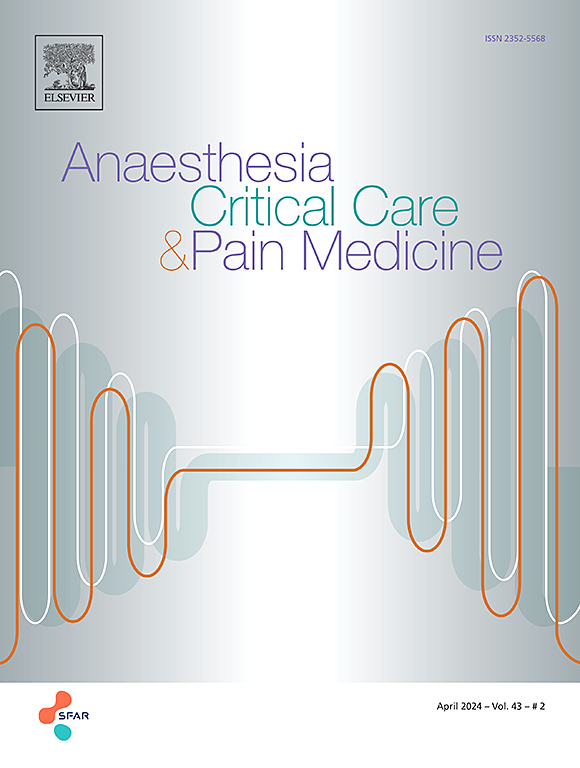Traumatic cardiac arrest, what clinicians and researchers must know
IF 4.7
3区 医学
Q1 ANESTHESIOLOGY
引用次数: 0
Abstract
Survival rates for trauma cardiac arrest (TCA) routinely range from 2 to 5% and have not improved in high-income countries over the past two decades, unlike those for medically induced cardiac arrests. This persisting low TCA survival rates have led to debates, about the value of resuscitating TCA patients, considering the significant risks and costs involved compared to the low chances of favorable outcomes. As well, TCA patients are frequently excluded from large randomized controlled trials on cardiac arrest management, with most research consisting of retrospective studies and clinical case series.
The causes of cardiac arrest following injury are diverse, and hypovolemia, particularly from hemorrhagic shock, is a significant cause of early death. Direct cardiac or large vessel injuries, such as myocardial contusions or tamponade, can also lead to TCA. While TCA from severe brain or spinal injuries are less frequent, survival rates in these cases can be slightly better if return of spontaneous circulation (ROSC) is achieved. The presence of bystander CPR, shockable initial rhythms, and rapid identification and treatment of reversible causes are associated with favorable outcomes. A few strategies should be applied systematically, such as early bleeding source control, oxygen supplementation, hypovolemia correction, and diagnosing and treating compressive pleural or pericardial effusions.
Emerging techniques are suggested for the management of refractory hemorrhagic shock and cardiac arrest, such as the REBOA (Resuscitative Balloon Occlusion of the Aorta), but further research is needed to determine the most effective approaches to prehospital and in-hospital TCA management.
创伤性心脏骤停,这是临床医生和研究人员必须知道的。
创伤性心脏骤停(TCA)的生存率通常在2-5%之间,在过去二十年中,与医学引起的心脏骤停不同,高收入国家的生存率没有提高。这种持续的低TCA存活率引发了关于复苏TCA患者价值的争论,考虑到与低机会的有利结果相比,TCA患者涉及的重大风险和成本。此外,TCA患者经常被排除在心脏骤停管理的大型随机对照试验之外,大多数研究由回顾性研究和临床病例系列组成。损伤后心脏骤停的原因多种多样,低血容量,特别是失血性休克,是早期死亡的一个重要原因。直接的心脏或大血管损伤,如心肌挫伤或心包填塞,也可导致TCA。虽然严重脑或脊髓损伤引起的TCA较少见,但如果实现了自发循环(ROSC)的恢复,这些病例的存活率可能会略高。旁观者心肺复苏术的存在、休克初始节律、快速识别和治疗可逆原因与良好的结果相关。早期控制出血源、补充氧气、纠正低血容量、诊断和治疗压缩性胸膜或心包积液等策略应系统应用。对于难治性失血性休克和心脏骤停,建议采用一些新兴技术,如REBOA(主动脉复苏球囊闭塞术),但需要进一步研究确定院前和院内TCA管理的最有效方法。
本文章由计算机程序翻译,如有差异,请以英文原文为准。
求助全文
约1分钟内获得全文
求助全文
来源期刊

Anaesthesia Critical Care & Pain Medicine
ANESTHESIOLOGY-
CiteScore
6.70
自引率
5.50%
发文量
150
审稿时长
18 days
期刊介绍:
Anaesthesia, Critical Care & Pain Medicine (formerly Annales Françaises d''Anesthésie et de Réanimation) publishes in English the highest quality original material, both scientific and clinical, on all aspects of anaesthesia, critical care & pain medicine.
 求助内容:
求助内容: 应助结果提醒方式:
应助结果提醒方式:


